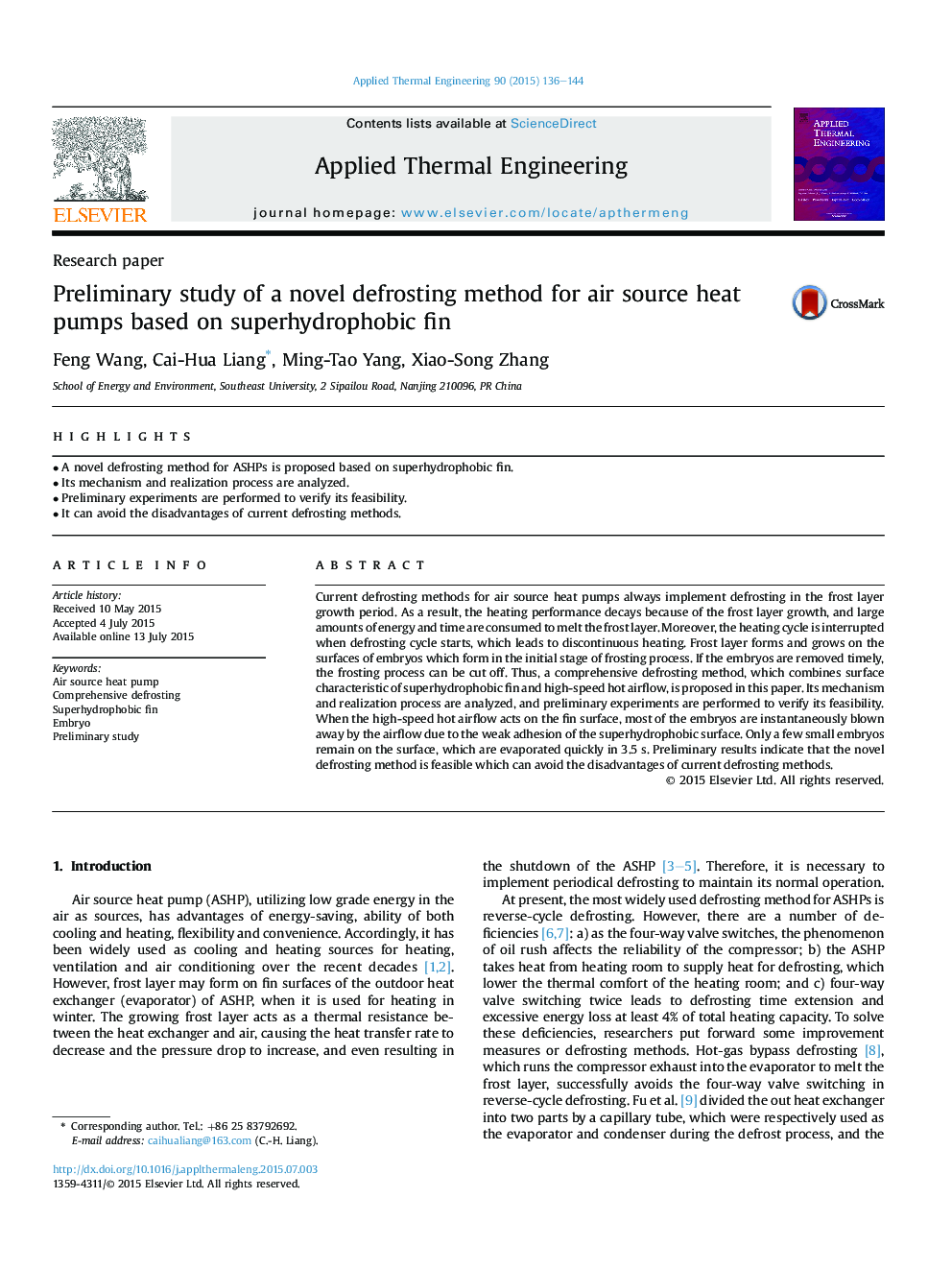| Article ID | Journal | Published Year | Pages | File Type |
|---|---|---|---|---|
| 7048820 | Applied Thermal Engineering | 2015 | 9 Pages |
Abstract
Current defrosting methods for air source heat pumps always implement defrosting in the frost layer growth period. As a result, the heating performance decays because of the frost layer growth, and large amounts of energy and time are consumed to melt the frost layer. Moreover, the heating cycle is interrupted when defrosting cycle starts, which leads to discontinuous heating. Frost layer forms and grows on the surfaces of embryos which form in the initial stage of frosting process. If the embryos are removed timely, the frosting process can be cut off. Thus, a comprehensive defrosting method, which combines surface characteristic of superhydrophobic fin and high-speed hot airflow, is proposed in this paper. Its mechanism and realization process are analyzed, and preliminary experiments are performed to verify its feasibility. When the high-speed hot airflow acts on the fin surface, most of the embryos are instantaneously blown away by the airflow due to the weak adhesion of the superhydrophobic surface. Only a few small embryos remain on the surface, which are evaporated quickly in 3.5 s. Preliminary results indicate that the novel defrosting method is feasible which can avoid the disadvantages of current defrosting methods.
Keywords
Related Topics
Physical Sciences and Engineering
Chemical Engineering
Fluid Flow and Transfer Processes
Authors
Feng Wang, Cai-Hua Liang, Ming-Tao Yang, Xiao-Song Zhang,
